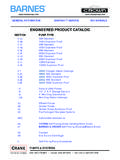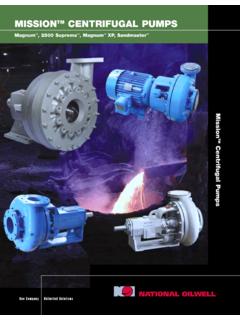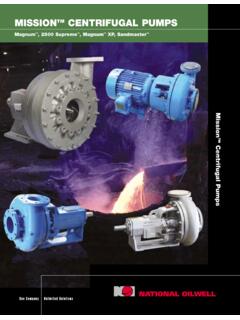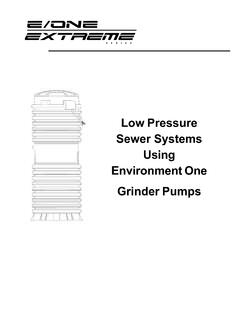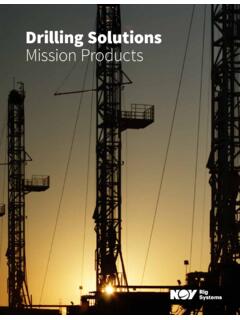Transcription of CHAPTER 9 SOLAR DESALINATION - MIT
1 CHAPTER 9. SOLAR DESALINATION . John H. Lienhard,1, Mohamed A. Antar,2 Amy Bilton,1 Julian Blanco,3 &. Guillermo Zaragoza4. 1. Center for Clean Water and Clean Energy, Room 3-162, Department of Mechanical Engineering, massachusetts institute of technology , 77 massachusetts Avenue, Cambridge, massachusetts 02139-4307, USA. 2. Department of Mechanical Engineering, King Fahd University of Petroleum and Minerals, Dhahran, Saudi Arabia 3. Plataforma SOLAR de Almeria, Carretera de Senes s/n, 04200 Tabernas (Almeria), Spain 4.
2 Visiting Professor of Electrical Engineering, King Saud University, Riyadh, Saudi Arabia . Address all correspondence to John H. Lienhard E-mail: In many settings where freshwater resources or water supply infrastructure are inadequate, fossil energy costs may be high whereas SOLAR energy is abundant. Further, in the industri- alized world, government policies increasingly emphasize the replacement of fossil energy by renewable, low-carbon energy, and so water scarce regions are considering SOLAR -driven DESALINATION systems as a supplement to existing freshwater supplies.
3 Even in regions where petroleum resources are copious, SOLAR -driven DESALINATION is attractive as a means of con- serving fossil fuel resources and limiting the carbon footprint of DESALINATION . Finally, in set- tings that are remote and off-the-grid, a SOLAR driven DESALINATION system may be more eco- nomical than alternatives such as trucked-in water or DESALINATION driven by diesel-generated electricity. This article reviews various technologies that couple thermal or electrical SOLAR energy to thermal or membrane based DESALINATION systems.
4 Basic principles of DESALINATION are reviewed. SOLAR stills and humidification-dehumidification DESALINATION systems are dis- cussed. Membrane distillation technology is reviewed. Current designs for SOLAR coproduction of water and electricity are considered. Finally, photovoltaic driven reverse osmosis and elec- trodialysis are reviewed. The article concludes by summarizing the prospects for cost efficient SOLAR DESALINATION . 1. INTRODUCTION. Water scarcity is a growing problem for large regions of the world.
5 Scarcity results when the local fresh water demand is similar in size to the local fresh water supply. Figure 1. shows regions of the world in which water withdrawal approaches the difference between evaporation and precipitation, resulting in 3 The primary drivers of increasing water scarcity are population growth and the higher consumption associated with rising standards of living. A lack of infrastructure for water storage and distribution is also a fac- tor in the developing world. Over time, global climate change is expected to affect existing water resources as well, potentially altering the distribution of wet and arid regions and ISSN: 1049 0787; ISBN: 1 978 56700 311 6/12/$ + $ 277.
6 C 2012 by Begell House, Inc. 278 A NNUAL R EVIEW OF H EAT T RANSFER. NOMENCLATURE. Acol area of SOLAR collector, m2 LEP liquid entry pressure, bar Amem reverse osmosis membrane surface L distance between water surface and area, m2 glass cover, m Apanel PV panel area, m2 M molecular weight, g mol 1. C0 PV panel performance constant, V m p mass flow rate of purified water, kg s 1. C1 PV panel performance constant, Md hourly distillate collected, kg m 2. V K 1 N molar flow rate, mol s 1. Cf c average concentration of water in n PV model diode ideality factor (Sec.)
7 7). the membrane feed channel, mg L 1 n depreciation period in years (Sec. 6). Cp concentration of reverse osmosis Nu Nusselt number permeate water, mg L 1 P pressure, Pa cp specific heat at constant pressure, pf polarization factor J kg 1 K 1 ppm parts per million, mg kg 1. Enet annual net electricity delivered to Pw water partial pressure (at T w ), mm Hg the grid, kWh Pwg water partial pressure (at T g ), mm Hg FF membrane fouling factor Q rate of heat transfer into system, J s 1. Fs radiation shape factor Q least minimum (reversible) rate of heat G Gibbs energy of per mole, J mol 1 transfer to separate, J s 1.
8 Grad SOLAR irradiation, W m 2 q charge of an electron, C. GOR gained output ratio qb heat loss through still material to H enthalpy per mole, J mol 1 surroundings (ground), W m 2. Hsol daily SOLAR incidence on SOLAR qc convection heat transfer from water to collector, J m 2 day glass cover, W m 2. hf g latent heat of vaporization, J kg 1 qga heat transfer from the glass cover to h heat transfer coefficient, W m 2 K 1 ambient air, W m 2. hf g latent heat of evaporation qe evaporation heat loss from water to (difference between the enthalpy of glass cover, W m 2.)
9 Saturated vapor and that of saturated Rs PV panel series resistance, . liquid at specified temperature), Ra Rayleigh number J kg 1 Rsh PV panel shunt resistance, . I PV panel current, A Re Reynolds number I0 reverse saturation current, A S entropy per mole, J mol 1 K 1. I ph PV panel light generated current, A S gen rate of entropy generation in system, k thermal conductivity, W m 1 K 1 J s 1 K 1. KA membrane permeability for water, SW specific work (per unit mass of m bar 1 s 1 purified water), J kg 1. KB membrane permeability for salt, T cell PV cell temperature, K.
10 M s 1 T temperature, K. K f uel annual fuel cost, e T0 system temperature, K. K invest total investment of the plant, e TH high temperature from which heat is K O&M annual operation and maintenance supplied, K. costs, e TCF water permeability temperature k Boltzmann constant, J K 1 correction factor kd real debt interest rate Ub heat transfer coefficient between the kinsurance annual insurance rate basin and surrounding soil, W m 2 K 1. S OLAR D ESALINATION 279. NOMENCLATURE (Continued). V PV panel operating voltage, V w water Vp volume of purified water produced per day, m3 day Acronyms V p volume flow rate of purified water, AGMD air gap membrane distillation m3 s 1 CSP concentrating SOLAR power.










